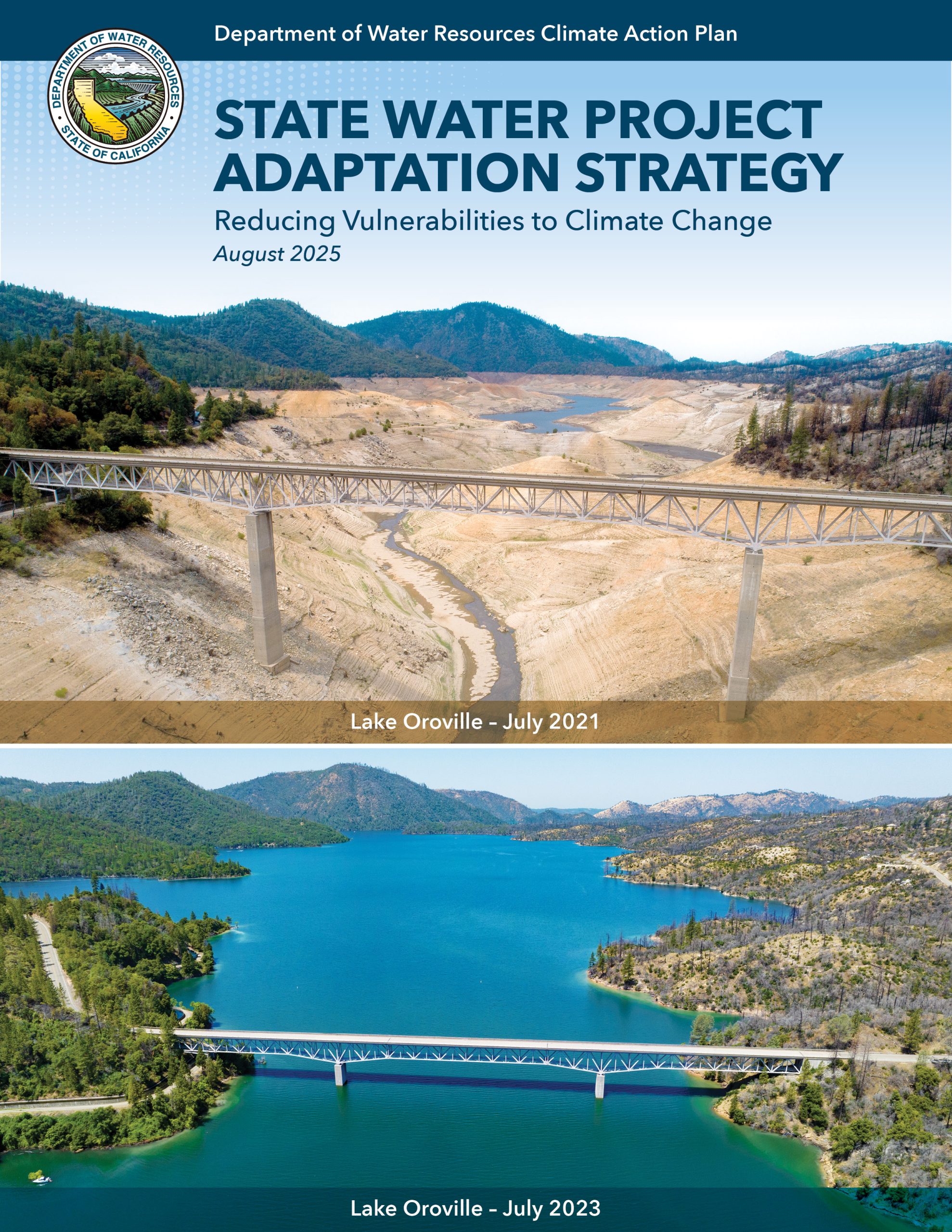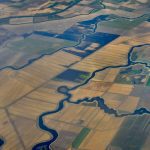- Delta Conveyance Project identified as most effective action.
- New strategy outlines 17 measures to prepare for climate change.
- Repairs to the California Aqueduct ranked as a top priority.
- Forecast-Informed Reservoir Operations recommended for early use.
- Combination of strategies offers strongest long-term resilience.
Wednesday, August 20, 2025 — The California Department of Water Resources released the State Water Project Adaptation Strategy , the first comprehensive plan to prepare the State Water Project (SWP) for hotter temperatures, more severe droughts, rising seas, and stronger storms.
, the first comprehensive plan to prepare the State Water Project (SWP) for hotter temperatures, more severe droughts, rising seas, and stronger storms.
The 700-mile State Water Project delivers water to 27 million people and 750,000 acres of farmland. The report, released yesterday, concludes that while climate change is likely to reduce average annual deliveries, a combination of structural upgrades, operational changes, and nature-based strategies can maintain reliability for decades to come.
Delta Conveyance Project as the Cornerstone.
The Delta Conveyance Project (DCP) was identified as the single most effective strategy to secure California’s water supply. The proposal includes constructing two new intakes along the Sacramento River and a tunnel to move water directly to the State Water Project’s pumping facilities.
According to the report, the project would not only safeguard against levee failure and earthquake risks but also capture storm runoff more effectively and maintain deliveries during times of disruption.
DWR Director Karla Nemeth stated , “Anything that compromises the State Water Project poses a threat to public health and economic success. This analysis helps us understand the best science-based strategies to ensure continued deliveries in the face of greater aridity and more powerful storms.”
, “Anything that compromises the State Water Project poses a threat to public health and economic success. This analysis helps us understand the best science-based strategies to ensure continued deliveries in the face of greater aridity and more powerful storms.”
Additional Strategies Under Review.
While the Delta Conveyance Project is prioritized, other measures were also highlighted:
-
California Aqueduct Repairs: Land subsidence in the San Joaquin Valley has reduced capacity by as much as 45 percent in some areas. Restoring the aqueduct is considered a first priority to sustain deliveries.
-
Forecast-Informed Reservoir Operations (FIRO): By using improved forecasting to optimize releases from Oroville Dam, FIRO can safely increase water storage with relatively low costs.
-
South-of-Delta Storage: Adding up to two million acre-feet of new storage south of the Delta could improve drought resilience, particularly when combined with the Delta Conveyance Project.
-
Nature-Based Solutions: Projects include wetland restoration, watershed management in the Feather River Basin, and land-use changes on Delta islands to slow subsidence.
Importance for Communities.
The report emphasized that the State Water Project provides water to three-quarters of California’s disadvantaged communities, representing nearly eight million people. Ensuring reliable deliveries is considered critical for both public health and economic stability.
Looking Ahead.
The State Water Project Adaptation Strategy will guide future decisions on maintenance, construction, and operational management. It concludes that no single measure will fully address the risks posed by climate change. Instead, a portfolio of coordinated strategies offers the greatest potential to protect water supplies, ecosystems, and communities across the state.
will guide future decisions on maintenance, construction, and operational management. It concludes that no single measure will fully address the risks posed by climate change. Instead, a portfolio of coordinated strategies offers the greatest potential to protect water supplies, ecosystems, and communities across the state.



